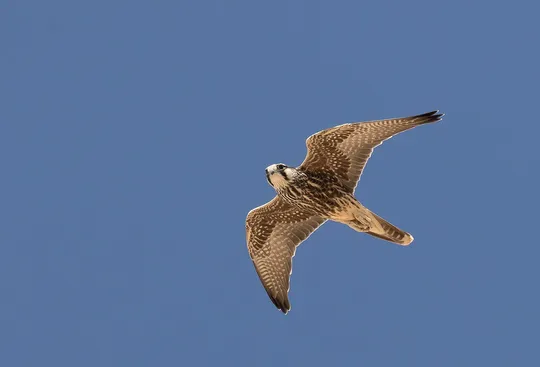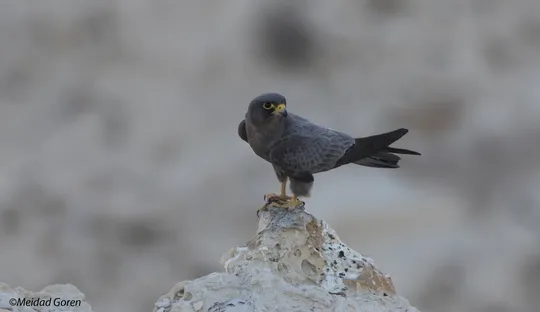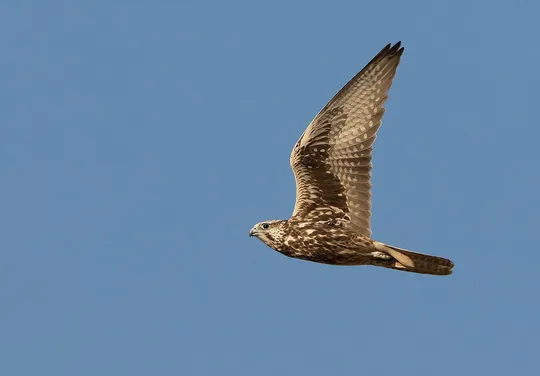Falco peregrinus
 Critically Endangered
Critically Endangered
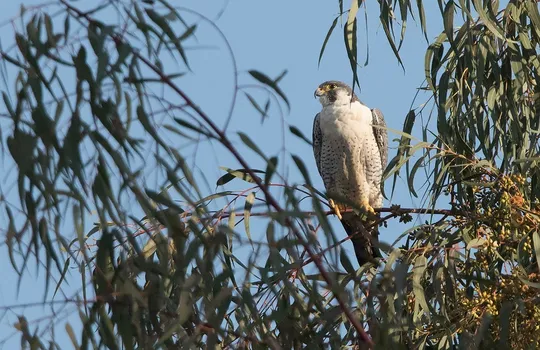
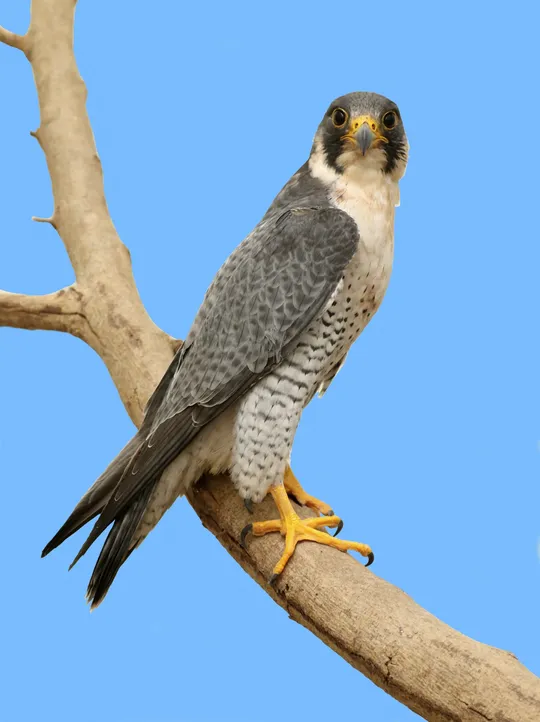
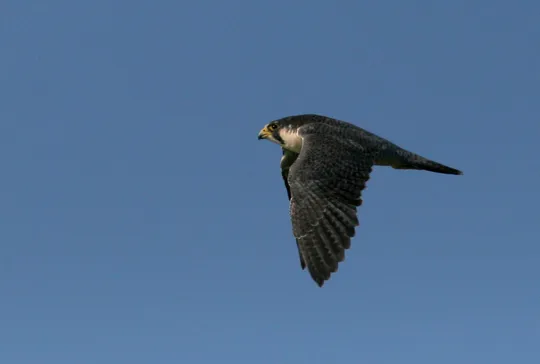
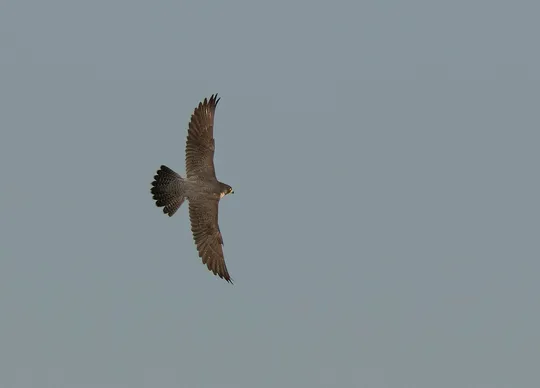
| Habitats | Mediterranean Cliffs |
|---|---|
| Presence In Israel | Summer |
| Breeding In Israel | Breeder |
| Migration Types | Short Range / Partial |
| Zoographical Zones | Mediterranean |
| Landscape Types | Mountainous, Urban |
| Vegetation Types | Forest, Mediterranean Maquis, Mediterranean Garrigue |
| Vegetation Densities | Medium, High |
| Nest Locations | Cliffs, Buildings |
| Diet Types | Terrestrial Vertebrates |
| Foraging Grounds | Aerial |
| Body Sizes | Medium (500 - 1000g) |
| Threat Factors | Pesticide Poisoning |
The Peregrine Falcon is a large, fast, aggressive falcon that feeds on birds it catches in flight. It nests on mountains and cliffs, as well as on tall buildings in cities. It winters in cities and open spaces with trees and electric poles that can serve as perches.
A number of pairs of the Mediterranean subspecies F. p. brookei nested in the Galilee, the Carmel and the Judean Mountains until the 1950s. These pairs were apparently harmed by agricultural pesticides (Paz 1986, Shirihai 1996). In recent years, a number of nesting attempts were made in Tel-Aviv, Haifa and the Hadera Power Plant, some of which apparently succeeded. A nestling at the fledging stage was collected at Haifa University in spring 2013, evidence of nesting that apparently occurred there on one of the buildings (Yigael Miller, pers. comm.).
The Peregrine Falcon has a broad cosmopolitan range. The closest breeding populations are found in Cyprus, Turkey and Greece.
No specific conservation measures have been taken for this species to date.
In recent years, a number of breeding attempts by Peregrine Falcons have been observed in Israel, consequently the species is no longer considered extinct. On the other hand, in order to ensure its future in Israel it is necessary to reduce the use of pesticides in agriculture and stop the use of lead shot for hunting.
The Peregrine Falcon feeds on game birds, such as pigeons and partridges. These birds could have remains of lead shot in their bodies and cause lead poisoning in the falcons. In order to conserve the Peregrine Falcons, as well as all other birds of prey, the use of lead shot for hunting should be stopped.
- הצופה, א. ומירוז, א. 2015. תכנית אב לשימור העופות הדורסים בישראל. מסמך פנימי של רשות הטבע והגנים.
- פז, ע. 1986. עופות. מתוך אלון, ע. (עורך), החי והצומח של ארץ ישראל. כרך 6. הוצאת משרד הביטחון, ישראל.
- Shirihai, H., 1996. The Birds of Israel. Academic Press, London.
- Symes, A. 2013. Species generation lengths. Unpublished, BirdLife International.
- Species page at Birdlife International
Current Occupancy Map
| Data Missing | Sporadic | Limited Sites | Low Density | High Density |
|---|---|---|---|---|
| 0 | 0 | 0 | 0 | 0 |
Distribution maps
The maps presented here provide visual information on the distribution of species in Israel from the past and present, and the changes in occupancy and breeding density during the comparison period. For further reading
Relative Abundance 2010-2020
Breeding density values in the current decade as determined from experts' opinion and observations from databases.
| Data Missing | Sporadic | Limited Sites | Low Density | High Density |
|---|---|---|---|---|
| 8 | 12 | 12 | 21 | 19 |
Relative Abundance 1980-1990
Density values based primarily on the book The Birds of Israel (Shirihai 1996).
| Data Missing | Sporadic | Limited Sites | Low Density | High Density |
|---|---|---|---|---|
| 5 | 14 | 14 | 17 | 22 |
Occupancy 1990-2020
The map shows differences in the species breeding distribution between the 1980's breeding map and the current weighted breeding evaluation. Negative value - species previously bred in the grid and is not presently breeding; positive value - species has not previously bred in the grid and is currently breeding.
| Data Missing | No Change | Occupancy Increase | Occupancy Decrease |
|---|---|---|---|
| 6 | 35 | 1 | 9 |
Change in Relative Abundance 1990-2020
The map shows the changes in the relative abundance of a species in each of the distribution grids between the breeding map of the 1980s and the weighted current breeding evaluation. Negative values - decline in abundance; positive values - increase in abundance; zero - no change in abundance.
| 80 to 100 | 50 | 20 to 30 | No Change | 30- to 20- | 50- | 100- to 80- | Data Missing |
|---|---|---|---|---|---|---|---|
| 0 | 4 | 2 | 22 | 12 | 14 | 11 | 16 |
| Rarity | |
|---|---|
| Vulnerability | |
| Attractiveness | |
| Endemism | |
| Red number | |
| Peripherality | |
| IUCN category | |
| Threat Definition according to the red book |
 Contributed:
Contributed: 